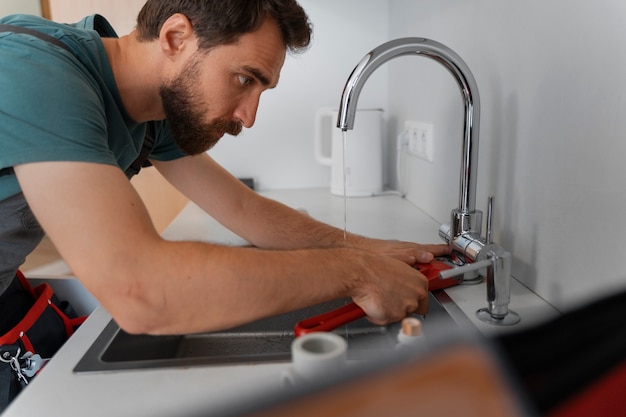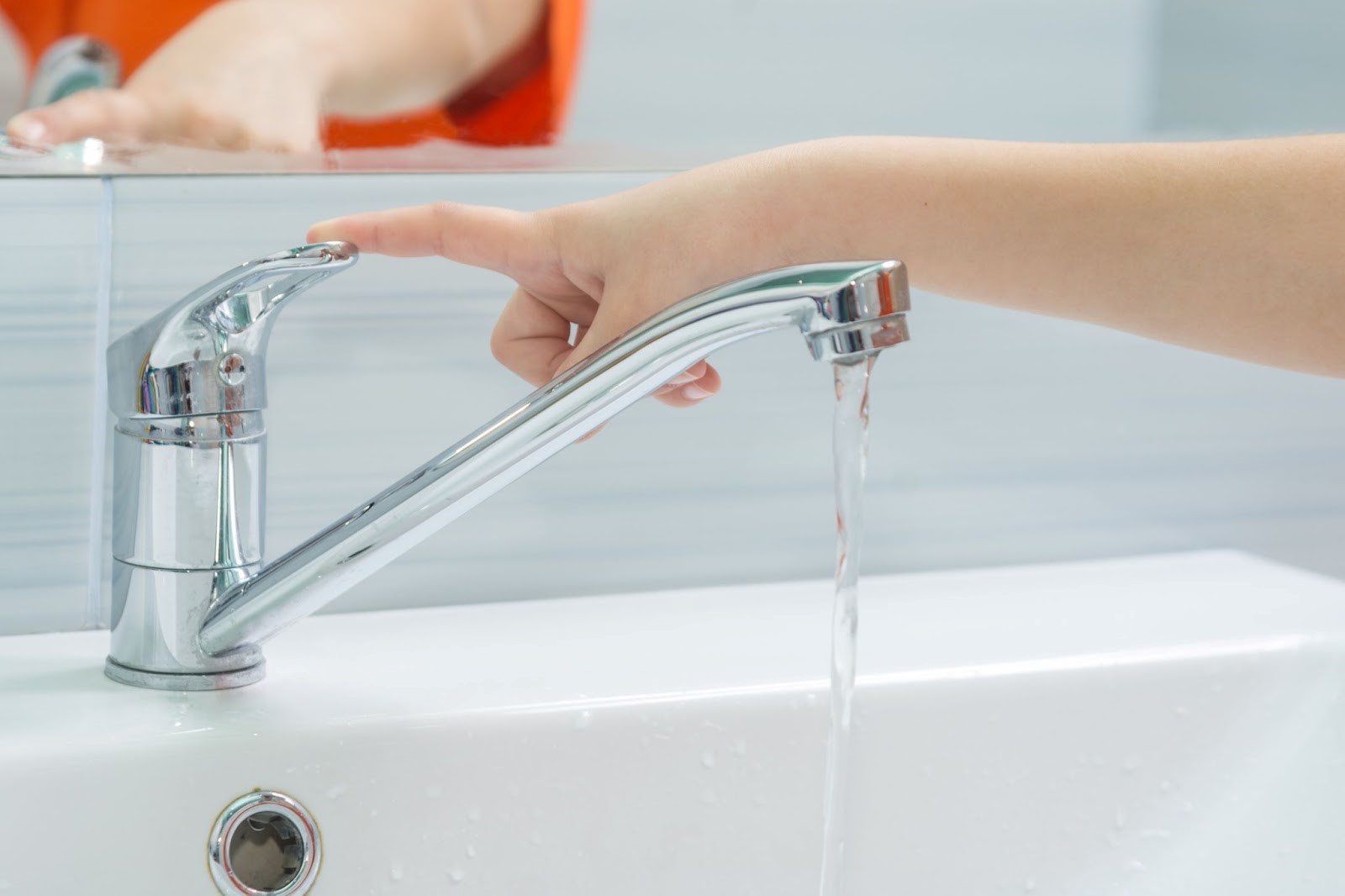Straightforward Instructions To Address A Slow-Draining Sink
Straightforward Instructions To Address A Slow-Draining Sink
Blog Article
This article underneath about 7 Ways To Fix A Slow-Draining Sink Before You Call A Plumber is exceptionally engaging. You should investigate it.

Introduction
We have actually all been there: You're cleaning your teeth or washing your hands, and you notice the water pooling in the sink. Rather than swiftly swirling down the tubes, it sticks around, transforming your once-refreshing early morning routine into a mini swamp scene. A slow-draining sink isn't just irritating; it's typically an indicator of larger plumbing issues hiding below the surface area. Fortunately is that many slow-draining sinks can be fixed with a little know-how, a couple of basic devices, and some patience. Ready to tackle this job head-on? Allow's roll up our sleeves and dive right in.
Recognizing the Root Causes Of a Slow-Draining Sink
Prior to you begin poking around in your pipes, it assists to recognize what could be causing the slowdown. Understanding the root cause makes it much easier to select the ideal fix.
Tools and Products You'll Require
The right tools make all the difference. Thankfully, you won't require a totally stocked plumbing professional's van to finish the job.
Step-by-Step Guide to Repairing a Slow-Draining Sink
Currently, allow's enter into the nitty-gritty. This step-by-step process will certainly guide you via straightforward strategies to restore your sink's drain.
Action 1: Eliminate and Tidy the Stopper
Typically, the stopper (that tiny plug you push down to obstruct water) is the initial offender. Remove it carefully and clean off any type of hair or crud entraped around its base. Wash it completely before putting it back in place.
Step 2: Utilize a Bettor to Displace Particles
Got that bettor all set? Setting it over the drain and provide it a couple of company pumps. The concept is to develop suction that can loosen any type of obstruction. If you see bits of particles drifting up, you're on the ideal track.
Step 3: Attempt a Drainpipe Serpent or Cable Hanger
If the plunger does not do the trick, it's time to highlight the drainpipe snake. Delicately feed it right into the drain and spin as you go. You may feel some resistance-- that's most likely the clog. Maintain twisting and drawing until you get rid of the obstruction. If you do not have a drain serpent, an aligned cord hanger can operate in a pinch.
Tip 4: Apply a Do It Yourself Drainpipe Cleaner
A natural cleaner made from cooking soft drink and vinegar can break down residual gunk. Pour half a mug of cooking soft drink right into the drainpipe, complied with by half a mug of vinegar. Let it fizz for about 15 mins, after that flush with hot water. This chain reaction typically does wonders for minor blockages.
Tip 5: Reassemble and Examine the Sink
Placed whatever back with each other and run the tap. Does the water currently swirl away at a respectable speed? If yes, give on your own a pat on the back. Otherwise, do not misery-- there are still a couple of even more tricks up your sleeve.
Essential Tools for DIY Fixes
A bettor is your best beginning point. A little, sink-sized plunger creates suction that can remove small obstructions. For even more relentless clogs, a drainpipe snake (in some cases called a plumbing professional's auger) works wonders. A set of handwear covers, a flashlight, and maybe a set of protective goggles are additionally helpful.
Suggested Cleaning Solutions
Moderate dish soap and warm water can assist break down oily build-up. A mix of cooking soft drink and vinegar is a reliable natural home remedy, and enzymatic cleansers offer an even more environment-friendly method. Maintain chemical drain cleaners as a last option, as they can be severe on your pipelines.
Common Perpetrators Behind Slow Drain
So, what's obstructing points up? Commonly, it's a blend of day-to-day debris-- assume hair, soap scum, tooth paste deposit, and remaining food particles. Over time, these little bits gather and cling to the pipeline walls, slowly tightening the passage and making it harder for water to pass through. In some cases, mineral deposits from hard water can additionally include in the gunk, producing the best tornado for persistent blockages.
When is it Time to Take Action?
If you observe the water draining slower than usual, it's an excellent concept to interfere faster instead of later on. Waiting also long can bring about finish blockages, undesirable smells, and even pipe damage. If the water takes greater than a few secs to remove after shutting off the tap, consider it a red flag and prepare yourself to place on your DIY hat.
Safety And Security First: Safety Measures and Prep work
Before you launch into unclogging mode, think about security. You're managing possibly unclean water and debris, so slip on a pair of handwear covers. If you're using chemical cleansers, make sure the area is well-ventilated and comply with the guidelines on the tag.
Protective Equipment and Office Arrangement
Lay down some old towels or dustcloths around the sink location to capture splashes. Eliminate any kind of items that might enter your way, like soap dispensers or tooth brush holders. Ensure you have excellent illumination-- get a flashlight if needed.
Different Techniques for Stubborn Clogs
Not all clogs are developed equivalent. If your sink still rejects to cooperate, think about these alternate remedies.
Sodium Bicarbonate and Vinegar Technique
We currently discussed this, however it's worth keeping in mind once again. This mild, eco-friendly method is safer than chemical cleaners and frequently fairly efficient.
Chemical Drain Cleansers
Enzyme-based cleaners make use of natural microorganisms to digest raw material. They're an excellent choice if you're wanting to avoid rough chemicals. Just keep in mind, they might take a bit longer to work their magic.
Chemical Drainpipe Cleaning Company: Advantages And Disadvantages
Chemical cleansers can blast via tough blockages quick, however they're not without downsides. They can create warm and fumes, damages pipes if used exceedingly, and posture environmental risks. Utilize them sparingly, and constantly follow the directions meticulously.
Preventive Measures to Keep Your Sink Flowing
Avoidance is the best treatment. By adopting a couple of simple behaviors, you can keep your sink from slowing down in the first place.
Regular Cleansing Practices
Wipe down the sink basin and fixture location on a regular basis. Remove hair or food fragments before they have a possibility to wash down the drainpipe.
Staying Clear Of Damaging Materials Away
Think twice before discarding coffee grounds, oil, or coarse vegetable scraps down the sink. These culprits cling to pipe walls, creating blockages with time.
Regular Maintenance Checks
Schedule a quick monthly inspection. Run warm water through the sink for a couple of minutes, taking notice of the flow. If it appears sluggish, act fast before it becomes a full-on clog.
When to Call a Specialist Plumber
In some cases, despite just how difficult you attempt, that clog just will not budge. That's when it's time to generate the pros.
Indicators That Show an Extra Serious Problem
If your sink drains gradually despite multiple efforts, or if you see water backing up in other components (like your shower or commode), you might have a more severe pipes problem hiding deeper in the system.
Stabilizing Do It Yourself Initiatives with Specialist Assistance
While DIY can conserve you cash and supply a sense of accomplishment, there's no embarassment in calling a specialist. A professional plumbing professional can analyze your whole pipes configuration, making certain there's no underlying damage or long-lasting trouble that can cost you extra later on.
Comparing Costs and Long-Term Solutions
Before making a decision, take into consideration the big picture. An inexpensive, quick fix may resolve the problem temporarily, yet purchasing a more irreversible option might save you cash and tension in the long run.
Considering the Expenses of Do It Yourself vs. Expert Fixes
DIY fixes usually cost bit greater than the rate of a plunger or a container of cooking soda. Specialist solutions, on the other hand, featured a price however might avoid repetitive concerns and costly repair services later on.
Buying Top Quality Fixtures and Upgrades
If your sink's design contributes to regular blockages, it could be worth upgrading to higher-quality fixtures or modifying the plumbing format. Consider this a financial investment in your home's performance and comfort.
Verdict
A slow-draining sink can feel like a minor inflammation, yet it's usually an indication that your pipes needs a little TLC. By comprehending the source, utilizing the right tools and techniques, and dedicating to easy safety nets, you can keep your sink moving easily. And when all else stops working, never ever hesitate to employ a specialist-- your home's pipes deserves the investment in care and upkeep.
Three Common Ways to Fix a Slow Drain
Baking Soda Method
Boil a full pot of water. Measure out cup of baking soda and pour it down the drain. Then take cup of the magical cleansing substance known as white vinegar and drop that down there too. Allow the mixture to fizz in the drain for five minutes as the vinegar and baking soda combine. Now dump in that whole pot of boiling water. This combination of cleaning substances should clear out anything that is causing your sink to drain slowly. If it doesn t...
Zip-It
If the baking soda method doesn t clear out your drain, it may be because a significant amount of hair and/or other debris has collected there and you need to remove it. Purchase a Zip-It tool at any home improvement or hardware store and insert it into your drain. It will catch any collected hair or debris that s blocking the flow of water. Pull it out. If it s got a big clump of hair, etc. on the end, you ve probably got your culprit.
Drain Cleaner
If these methods don t work, there is the standard drain cleaner that you can also buy in a hardware store or even your local grocery store. It s better if you can use a household solution, but these drain cleaners often work in a pinch. They re very simple to use. You generally just dump them in your drain and wait. If even this method is not effective, it may be time to call the plumber.
https://www.mrrooter.com/oneida/about-us/blog/2017/july/three-common-ways-to-fix-a-slow-drain/

I have been very occupied with Solved! How to Fix a Slow Sink Drain and I hope you enjoyed reading my blog posting. Are you aware of somebody who is fascinated by the niche? Take a moment to share it. Thank you so much for going through it.
Call Report this page